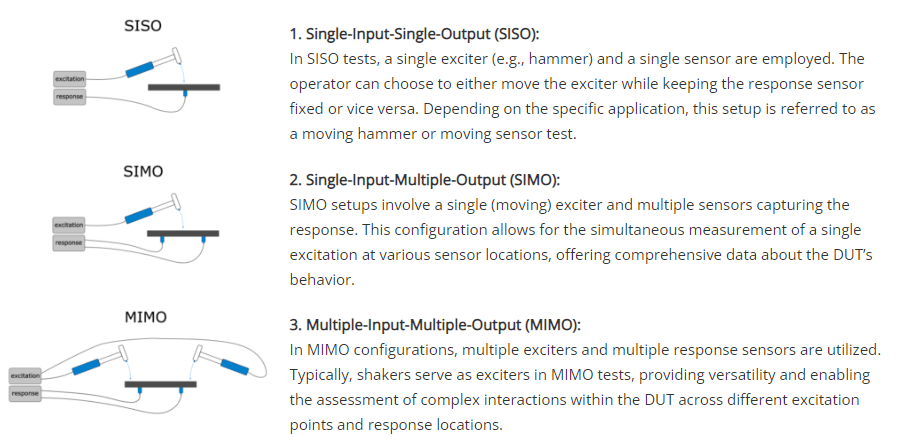Modal testing is a process used to determine the frequency response function (FRF) of a structure. In this process, the user needs to select the appropriate sensor, perform channel coupling, and determine the frequency range to accurately obtain the frequency response of the system. The structure under test must be stimulated to produce an adequate response at the measurement point. In a laboratory environment, the device under test (DUT) can be excited using an impact hammer, a single vibrator, or multiple vibrators. In the field, some tests can be done by measuring the operational response without applying additional incentives. This paper will focus on the excitation technology of vibration table.
shaker modal testing and its subsequent modal analysis are widely used tools in several engineering disciplines and industries. Here are some important application areas:
Modal testing evaluates the dynamic response of large structures, such as buildings, Bridges, and DAMS, to wind, earthquake, or other operating loads.
In the automotive industry, modal testing is used to evaluate the vibration characteristics of vehicle components and chassis systems, which is critical for ride comfort and durability analysis.
Modal testing is used to measure the vibration patterns of machines and industrial systems, and further analysis helps to prevent fatigue failures and optimize system performance
In the field of aviation, modal testing is crucial for the analysis of the dynamic characteristics of aircraft components such as wings, fuselage and control surfaces, helping to optimize the structural design of aircraft.
Describes the frequency at which a structure tends to vibrate when subjected to a dynamic load without any external force. These frequencies are inherent properties of the system and depend on its mass, stiffness and damping characteristics.
They quantified the rate at which structural vibrations decay over time. Damping is crucial in understanding the energy dissipation and stability of systems under dynamic load conditions.
Describing the spatial distribution of displacement or deformation of a structure at a specific natural frequency provides important information about the vibration mode and dynamic behavior of the system. Different from modal analysis, which focuses on parameter analysis, modal testing focuses more on data acquisition. Although shaker modal testing encompasses a variety of methods, shock testing is one of the most commonly used techniques. This process involves applying a controlled mechanical force to the device under test (DUT) through a shaker and measuring the resulting response. Typically, this controlled force is applied by means of modal hammers that have IEPE sensors integrated into their striking surfaces, enabling precise measurement of the applied force. At the same time, an accelerometer or other vibration sensor is used to capture the response of the device under test.
Depending on the device under test (DUT), the test setup, and the environment, the best solution is usually to use one or more exciters and one or more response sensors. This configuration provides three unique and useful ways to test.

If resonance occurs, the amplification of the response will show up in the response spectrum. By combining the response spectrum and the force spectrum, we can get the transfer function, in particular the frequency response function (FRF), which is the key parameter we focus on. FRF can quantify the relationship between the input signal and the output signal at each frequency. There are a variety of algorithms for calculating FRF, and these are usually performed in the frequency domain because this can significantly simplify the calculation process.
JOEO modal shaker permanent magnet shakers are used for vibration testing, fatigue and resonance testing, and modal and structural analysis of small components and electronic devices, capable of applying forces up to 440N. For more information on shaker modal testing, or for application-specific technical support and advice, please feel free to contact our team of engineers. They will provide you with professional answers and customized solutions to meet your needs.